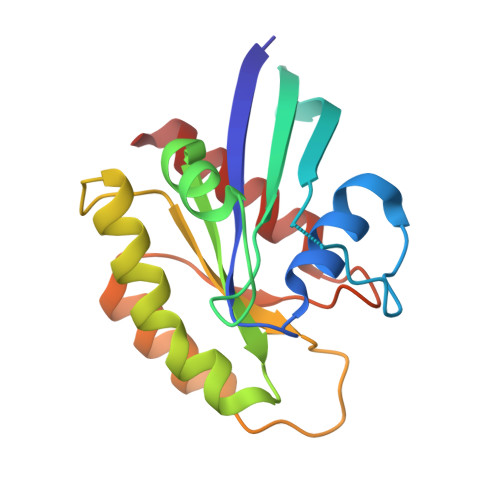Isoform-Specific Destabilization of the Active Site Reveals a Molecular Mechanism of Intrinsic Activation of KRas G13D.
Johnson, C.W., Lin, Y.J., Reid, D., Parker, J., Pavlopoulos, S., Dischinger, P., Graveel, C., Aguirre, A.J., Steensma, M., Haigis, K.M., Mattos, C.(2019) Cell Rep 28: 1538-1550.e7
- PubMed: 31390567
- DOI: https://doi.org/10.1016/j.celrep.2019.07.026
- Primary Citation of Related Structures:
6DZH, 6E6C, 6E6F, 6E6G, 6E6H, 6E6P - PubMed Abstract:
Ras GTPases are mutated at codons 12, 13, and 61, with different frequencies in KRas, HRas, and NRas and in a cancer-specific manner. The G13D mutant appears in 25% of KRas-driven colorectal cancers, while observed only rarely in HRas or NRas. Structures of Ras G13D in the three isoforms show an open active site, with adjustments to the D13 backbone torsion angles and with disconnected switch regions. KRas G13D has unique features that destabilize the nucleotide-binding pocket. In KRas G13D bound to GDP, A59 is placed in the Mg 2+ binding site, as in the HRas-SOS complex. Structure and biochemistry are consistent with an intermediate level of KRas G13D bound to GTP, relative to wild-type and KRas G12D, observed in genetically engineered mouse models. The results explain in part the elevated frequency of the G13D mutant in KRas over the other isoforms of Ras.
Organizational Affiliation:
Department of Chemistry and Chemical Biology, Northeastern University, Boston, MA 02115, USA.



















